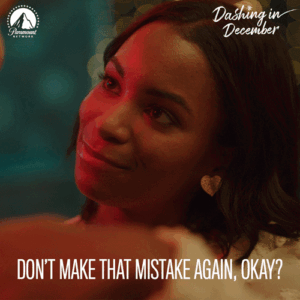
Writing job listings will say, “Send samples or a portfolio.”
You? You’ve written tons, but none of it’s published. We get it. That stuck feeling is real. This blog is for anyone figuring out how to build a writing portfolio with no published work but plenty of potential. Stick with us, and we’ll show you easy hacks, writer-friendly platforms, and smart ways to put your work out there.
TL;DR
- Think your writing doesn’t count until it’s published? That’s a myth we’re busting today.
- This blog takes you through 5 beginner-friendly steps to craft a portfolio from the ground up.
- We’re also calling out what not to do, so you don’t accidentally sabotage your own work.
- And if you’re feeling stuck, there’s a mix of fun tools, internal links, and real tips to keep you moving forward.
How to Start As a Beginner?

Did you know that about 75% of freelancing students land paid writing projects within two to three months, even before getting a single byline? And honestly, most beginner writers you admire probably wrote two to five sample pieces before landing their first real gig.
That means your ideas and execution hold more weight than a platform name. And industry experts emphasise that the key is “portfolio readiness,” not publishing history.
In fact, client-focused writing portfolios with sample briefs and content created from scratch are now seen as more trustworthy than random links. Let’s now explore how to build a writing portfolio without published work in five simple, doable steps.
5 Simple Steps to Build a Writing Portfolio Without Any Published Work

Creating a writing portfolio when you have nothing “official” to show might sound like a paradox, but it’s actually the most common starting point. Many successful writers began with zero bylines and a whole lot of ideas.
A well-curated writing portfolio, even without “published” work, can do the talking for you. The trick lies in showing what you are capable of. Let’s break it down step by step:
1. Write Sample Pieces
Instead of waiting for an assignment, give one to yourself. Begin by choosing topics you are interested in: this might be your love of travel, what you are learning in your degree, or your views on the events of the day. Target 2-3 short works that represent you as a writer.
Make sure they’re structured well and easy to follow. These samples will do the talking when your portfolio has no prior credits to show.
Try This Out
Choose one niche to begin with. It can be anything like education, lifestyle, tech, etc. Want to be a food writer? Review your favourite street food joint in detail. Want to write opinion pieces? Pen one on something you deeply care about.
2. Pick a Platform to Showcase Your Work
Now that you’ve got a few drafts in hand, it’s time to put them somewhere they can shine. Platforms like LinkedIn and Medium let you publish without any setup stress. Just sign up, post your work, and you’re already one step into the blogging world.
Try This Out
Skip the website setup and try TheWebLearners. It’s a beginner-friendly platform where every post gets sorted into the right category, and soon, it’ll change into a portfolio you can proudly showcase on LinkedIn, in bios, or even in client decks.
3. Write a Short, Friendly Bio
Your writing samples matter, but so do you. Editors and clients want to know the person behind the writing. A good bio adds warmth and credibility. Mention your background, what you like to write about, and how someone can reach you.
Try This Out
Use two small paragraphs: one that shows your journey or interests, and one that includes contact details or links. Keep it honest and approachable; skip the corporate niceties.
4. Start Organising Your Work
Having your writing samples scattered across apps and folders won’t help when you need to share them quickly. Start with a basic Google Doc where you list your best blogs and add short intros for context.
A well-formatted Google Doc can act as your temporary (or permanent!) portfolio. It’s editable and easy to share.
And if you’re ready to go a step further, sites like Contently and Clippings.me offer structured portfolio templates tailored for writers.
Try This Out
Open a fresh Doc and drop in links to your blogs. Then group them into sections like “Lifestyle Writing,” “Finance Blogs,” “Health and Wellness,” etc. That way, it becomes easier for readers and recruiters to scan through. WebLearners blogs work great here, as they’re already organised by category.
5. Keep Your Portfolio Updated
What you wrote a year ago may not reflect the writer you are today, and that’s a good thing. Your portfolio should evolve with you. Maybe you’ve picked up a new tone, shifted niches, or written something you’re proud of recently. So don’t forget to check in and make the updates.
Try This Out
Set a reminder and schedule a 15-minute “portfolio check-in” every month to review your portfolio. Add new samples, check for broken links, and refine your intro to reflect where you are now. Your audience and opportunities deserve the best version of your writing.
Putting together great samples is just half the story. How you showcase them is just as important. In moments like these, AI tools can seriously boost your writing game. If you’re confused about which one fits your needs, this AI tool guide takes out the guesswork.
You can check out this quick video as well to get started writing a portfolio for your writing:
Mistakes to Avoid When Creating Your First Portfolio
So now that you’ve got the steps down, let’s hit pause. Because even a solid portfolio can lose its charm if you fall into some beginner traps. And trust us, most new writers do. Here are some common and totally avoidable mistakes that could be holding your writing portfolio back without you even realising it.
1. Dumping Everything You’ve Written
When you are building your first portfolio, it’s tempting to include every article, story, or poem you’ve ever written. But more doesn’t always mean better.
A focused portfolio with your top 4–6 pieces helps readers quickly understand your writing tone and where your strengths really lie.
2. Forgetting to Add a Brief Introduction
No matter how great your writing samples are, readers need a moment of context. A few lines about your background and what you love writing can help people connect with your work more easily. That short paragraph at the top often shapes the impression they carry forward.
3. Not Categorising Your Work
Unsorted links are hard to browse. According to research, users take only 50 milliseconds to form an opinion about your website and content layout. That’s why it’s smart to divide your work into clear groups.
Whether you’ve written blogs, poems, opinion pieces, or newsletters, divide them neatly into categories. It shows that you respect your reader’s time and that you care about how your work is received.
4. Poor Formatting and Broken Links
If your links take readers to “Page Not Found,” they won’t stick around to read what you’ve written. And cluttered formatting doesn’t help either. Click through every link, skim the text, and test it on your phone; if it feels messy, fix it before someone else notices.
5. Ignoring Your Target Readers
It’s easy to fill your portfolio with pieces you personally love, but will those pieces speak to the people hiring you? If your dream gig involves writing product descriptions or SEO blogs, then your portfolio should show that you’re capable of doing just that.
A recruiter wants proof you can do their kind of writing. So include work that reflects the industry you’re stepping into, not just your personal favourites.
6. Hiding Your Contact Info
You’ve nailed your writing, organised your samples, and polished your layout, but forgot to add a way for someone to reach you? That’s a missed opportunity. Always include a clear contact section or email ID at the top or bottom of your portfolio. Make it easy for opportunities to reach you.
Mistakes are part of the process, but now you’ve got the heads-up most writers never get early on. If you are ready to take the next step, here’s how you can publish your first blog without a website. It’s easier than you think.

Final Thoughts
See? You don’t need a publishing deal or a flashy website to prove you’re a writer. You just need your words and the right way to present them. That’s exactly how you build a writing portfolio with no published work that actually gets noticed.
So tell us, what’s that first piece you’d proudly showcase? A blog? A rant? That one LinkedIn post that did numbers? Let’s hear it in the comments.
And hey, if you want your first post to live somewhere that doesn’t feel scary, Web Learners is a great option.
FAQs
You can build a strong offline writing portfolio by:
Creating a private PDF with your best samples (real or speculative).
Using Google Docs or Word files organised by genre (e.g., articles, essays, copywriting).
Writing for mock clients, prompts, or personal projects and treating them as real samples.
Formatting them professionally with your name, title, and brief context for each piece.
Tip: Include a short note before each sample, e.g., “Feature article written for a travel magazine assignment.” This gives context.
You don’t need clients or platforms to start. Try these:
Speculative writing: Write for imaginary clients or brands.
Rewriting ads/articles from the internet as samples.
Writing blog-style posts in Word or Docs, even if they’re never published.
Using portfolio builders like Canva, Notion, or Google Sites (all free).
The key is to treat every piece as if it’s for a real audience; this shows initiative and skill.
A creative writing portfolio may include:
Short stories
Flash fiction
Poems
Dramatic monologues
Excerpts from novels
Example structure:
Title Page
Table of Contents
2–3 polished pieces (no more than 10 pages total)
Short bio and writing influences
Many MFA programs or creative writing courses expect this layou
Answer:
1. Pick your writing focus: e.g., content writing, fiction, copywriting.
2. Choose 3–5 strong pieces (write new ones if needed).
3. Add a brief introduction or context before each piece.
4. Design it using:
5. Word/Docs + export to PDF
6. Canva (free portfolio templates)
7. Notion or Google Sites (for a simple online portfolio)
8. Label your file or link clearly: Firstname_Lastname_WritingPortfolio.pdf







